In November of 2022 I went on an expedition to Egypt together with my dear friend Marein. My goal was to travel from south to north, visiting sites and tombs along the way to get a feel for the the landscape while documenting landscape scenes in the tombs that we passed. This in light of my ongoing PhD research at Mainz University, in which I study the ancient Egyptian concept of landscape (chiefly marshland and desert) and how this is reflected in the images (and words) on the tomb walls.
We started our epic journey in Giza. The Atlantis Pyramids Inn was a quaint guest house with an unrivalled view of the Giza plateau, overlooking the sphinx and pyramids in all their glory. It was situated right next to the lower entrance to the site, where on Fridays, thousands of school children squeezed through to gain access. From the roof terrace, with a breakfast of ful, tameya and nescafe, we enjoyed the daily siege of the pyramids by camel drivers, horse carriages and tourists. The buildings in front of the guest house had already been demolished in an attempt by the government to clear the area. Undoubtedly Khufu’s valley temple lies somewhere beneath the rubble. It is a pity that eventually, also the inn had to be moved to the other side of the plateau. Eisa and Soso form the warmhearted couple that runs this establishment.
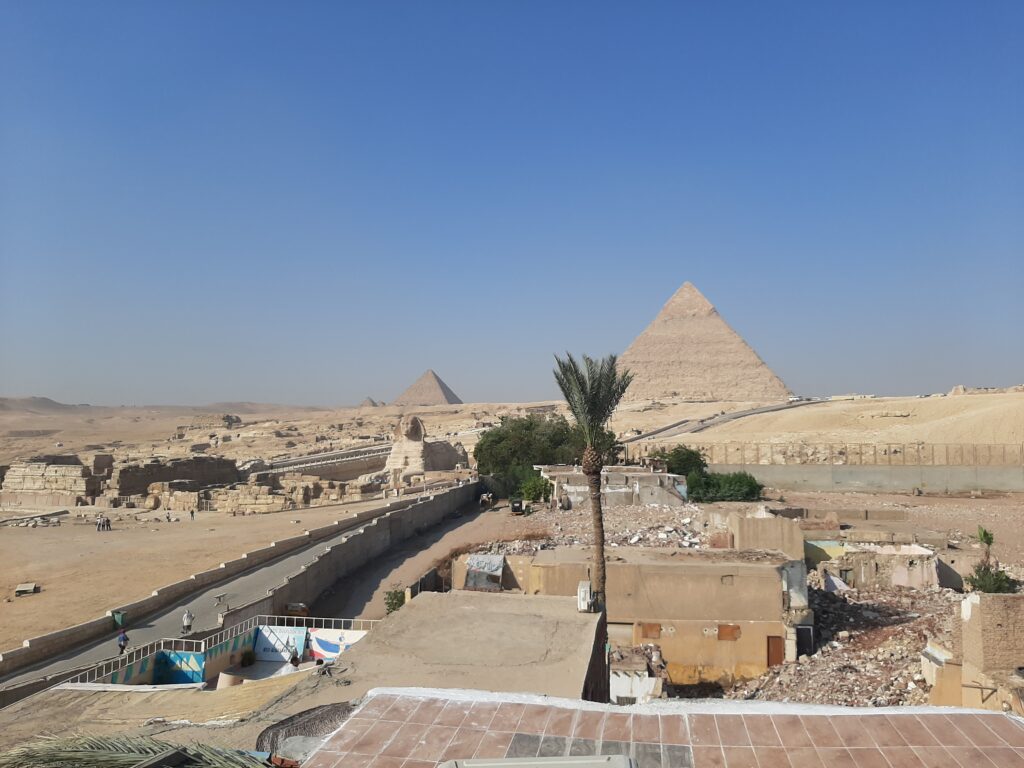
A guest house with a view
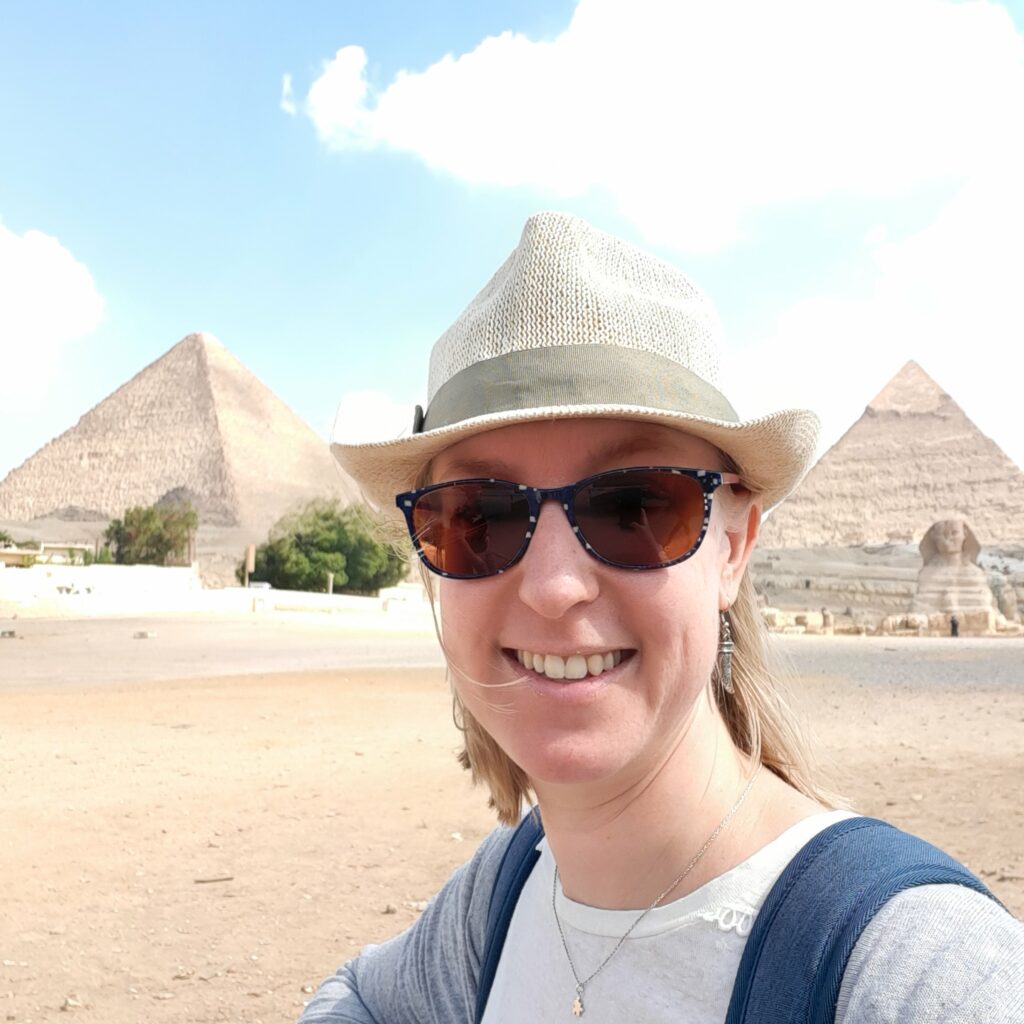
Obligatory pyramid selfie
On the site, we inspected the remains of Khafre’s harbour (a Nile arm used to pass very close to the building site during the Old Kingdom), where even today the ground is wet and vegetation is growing. We admired the monumental granite blocks that make up the Valley Temple, stones that were transported directly from the granite quarries at Aswan. Passing the majestic sphinx, we trudged up the causeway and looked at all the pyramids up close, from afar and from each side. On the northwest corner of Khafre’s pyramid, the grooves made in the bedrock by the pyramid builders to even the ground before construction can easily be spotted. Next we paid a visit to the mastaba tombs of Iymery (G6020, priest of Khufu) and Meresankh III (queen of Khafre).

Khafre’s harbour

She’s a beauty
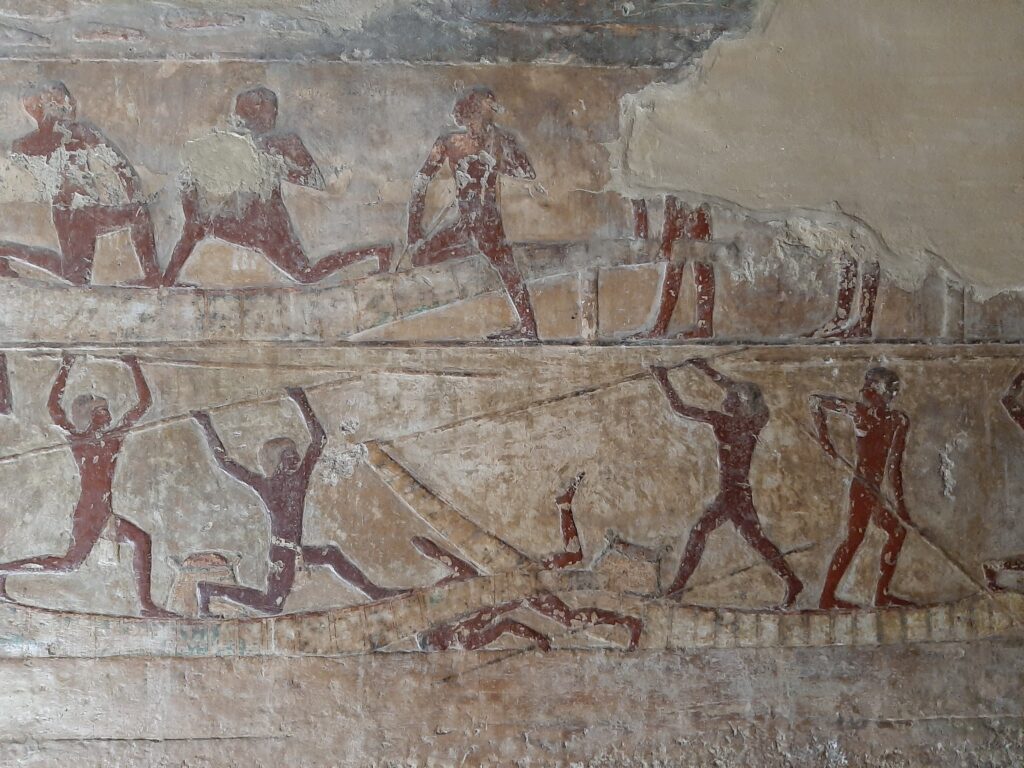
Missing the boat in the tomb of Iymery
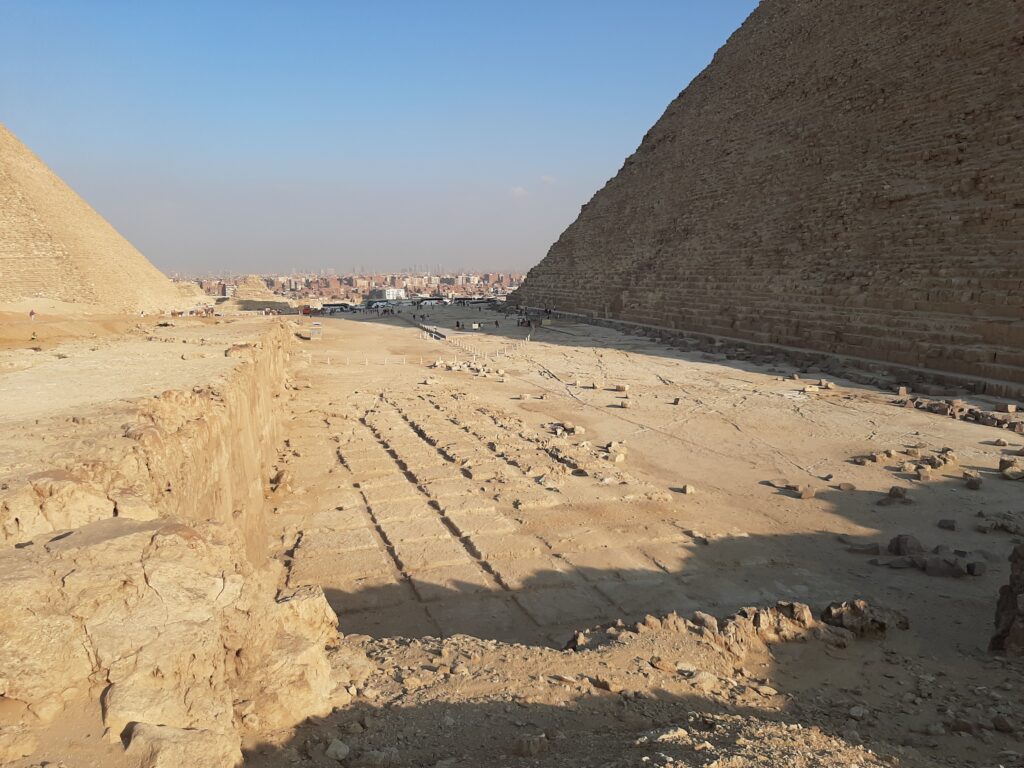
Groovy pyramids
The next day we chartered a Uber driver to Dahshur, where we spent the morning climbing up and down and up the Red Pyramid and Bent Pyramid of Snofru. The ‘inverted pyramid’ inside the Red Pyramid is architecturally impressive (and gives a nice echo for opera-type singers, not that I know any). After various Indiana Jones moves to reach the burial chamber of the Bent Pyramid, we (or rather I) admired the Old Kingdom wooden beams as well as a large family of (hopefully) benevolent bats. Climbing back out of the Bent Pyramid was, for long-legged me, a feat of pure will power, but worth the subsequent three days of muscle ache.
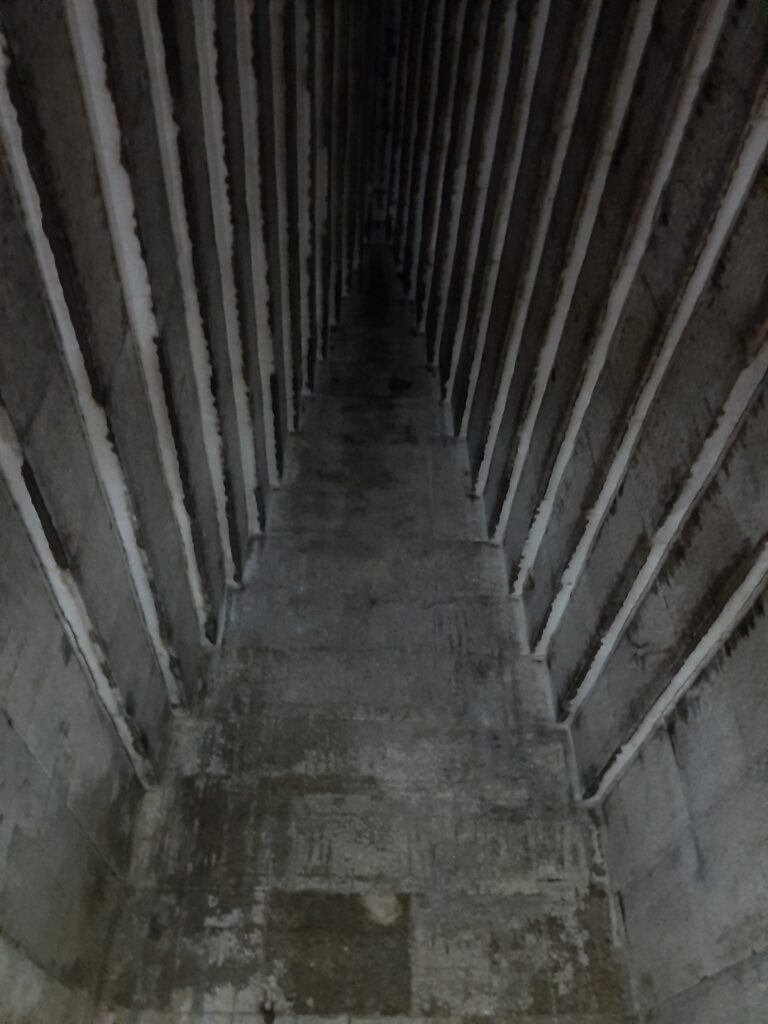
Architectural perfection
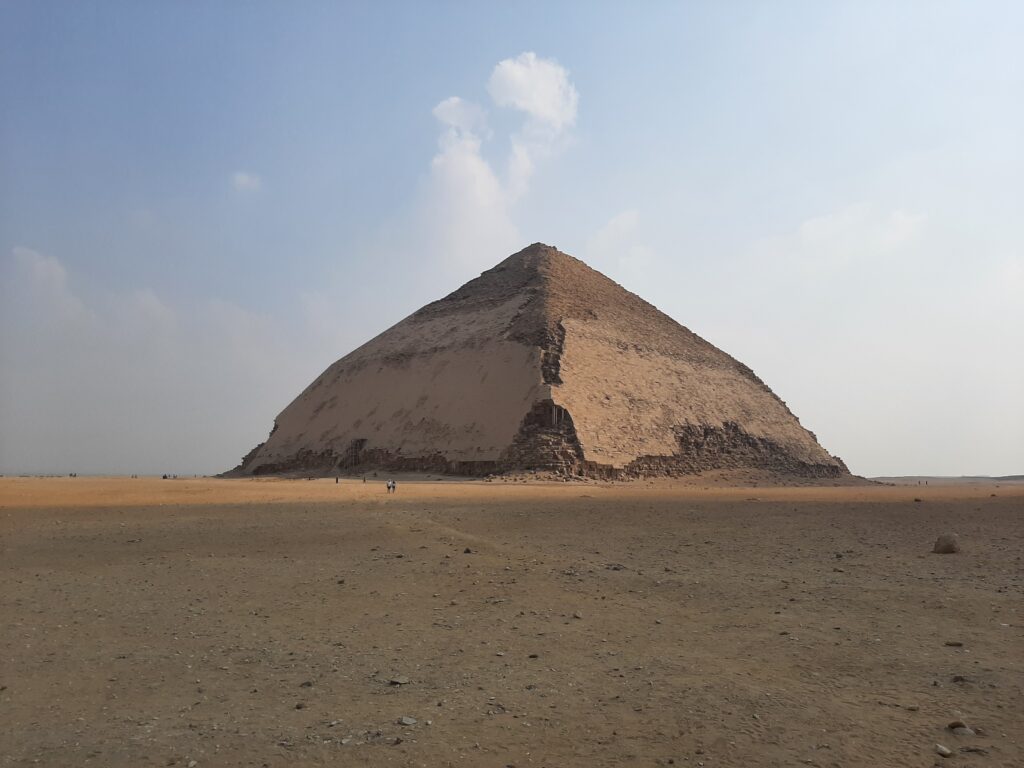
Snofru’s experiment
The afternoon brought us to Memphis, where I hadn’t been for 22 years. This small but charming open air museum contains large and small statues reflecting the long history of the capital city, with the lying statue of Ramses II as a highlight. The garden-like surroundings attest to the fertility of the landscape and makes you realize why this spot was chosen. Originally, Memphis was situated on an island, with the main temple dedicated to Ptah partly submerged by floodwaters during the inundation of the Nile (I know I have a reference for this somewhere – read my dissertation if you want to know more).
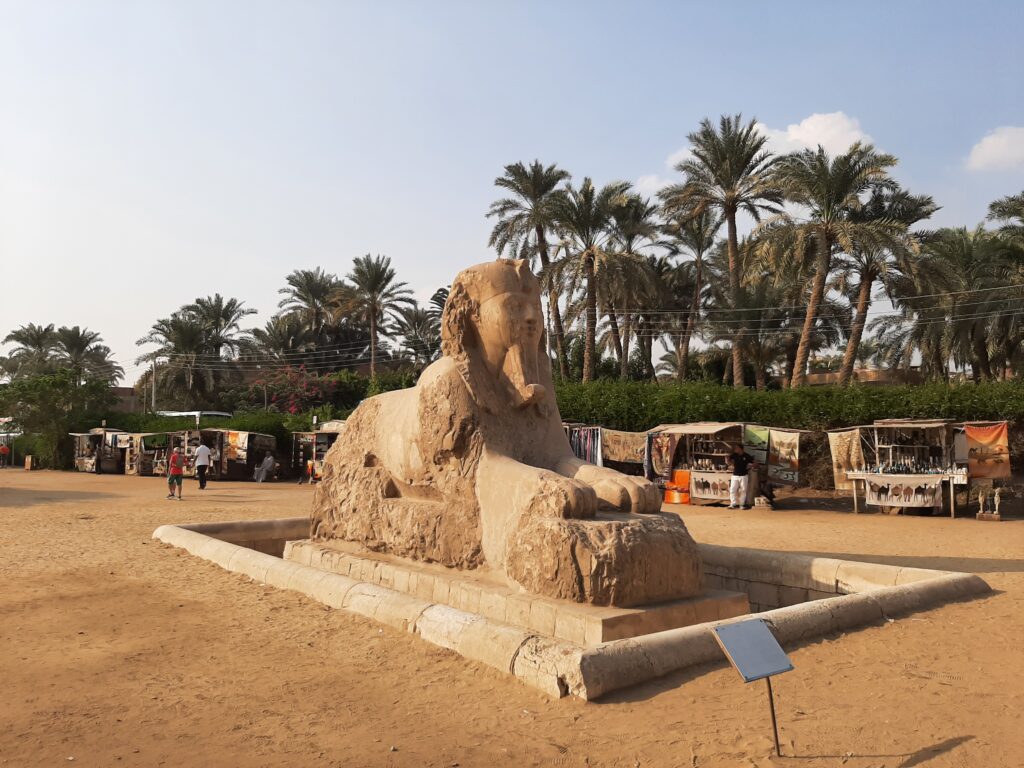
Alabaster (calcite) sphinx of Hatshepsut or one of the Amenhoteps
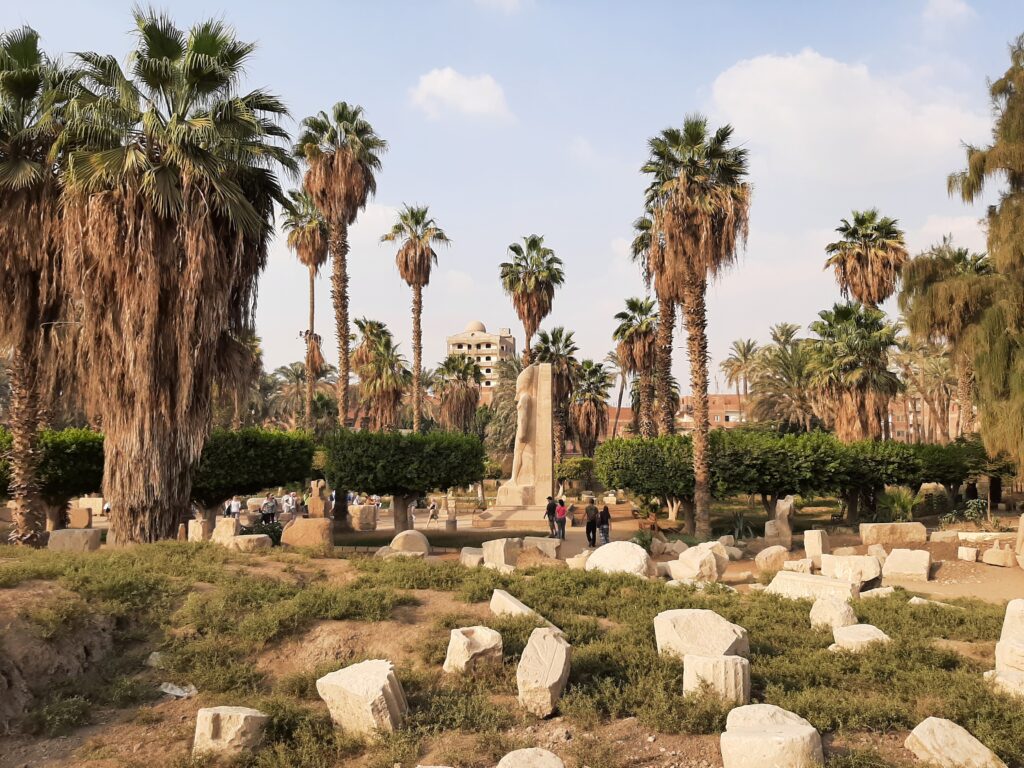
Memphis, garden city
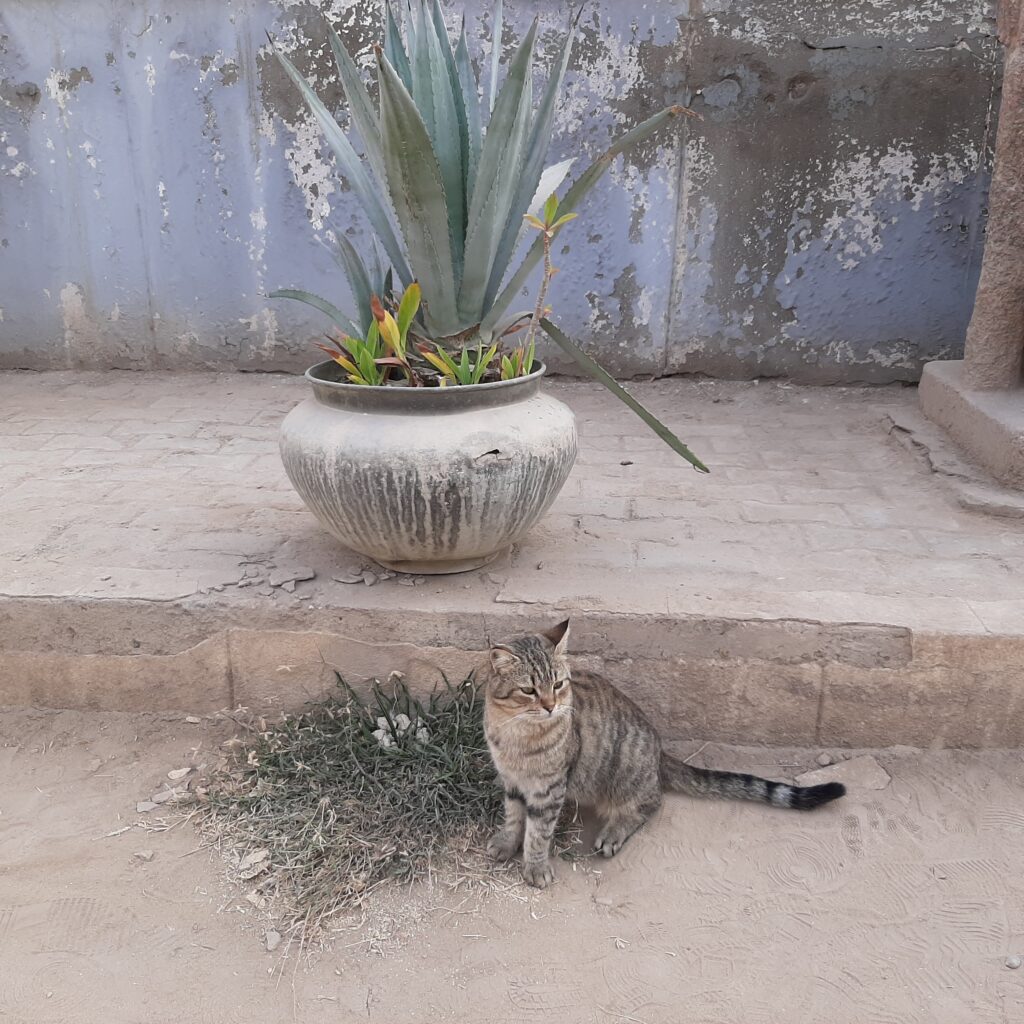
Cute cat
Saqqara couldn’t be skipped on our itinerary so we spent a lovely day barging through the desert (also fruitlessly trying to record a video in the unceasing wind). Besides taking endless photos in the mastabas of Idut, Mehu, Ptahhotep/Akhethotep and Ti, we also visited the New Kingdom necropolis excavated by the Dutch/Italians (with the tombs of Maya, Horemheb and Meryneith) and the impressive Serapeum. I also took a little detour while Marein entertained the guard to try and locate the lost mastaba of Hetepherakhty. Afterwards we were totally scammed by a Uber driver, but what can you do.

Hello Djoser my old friend
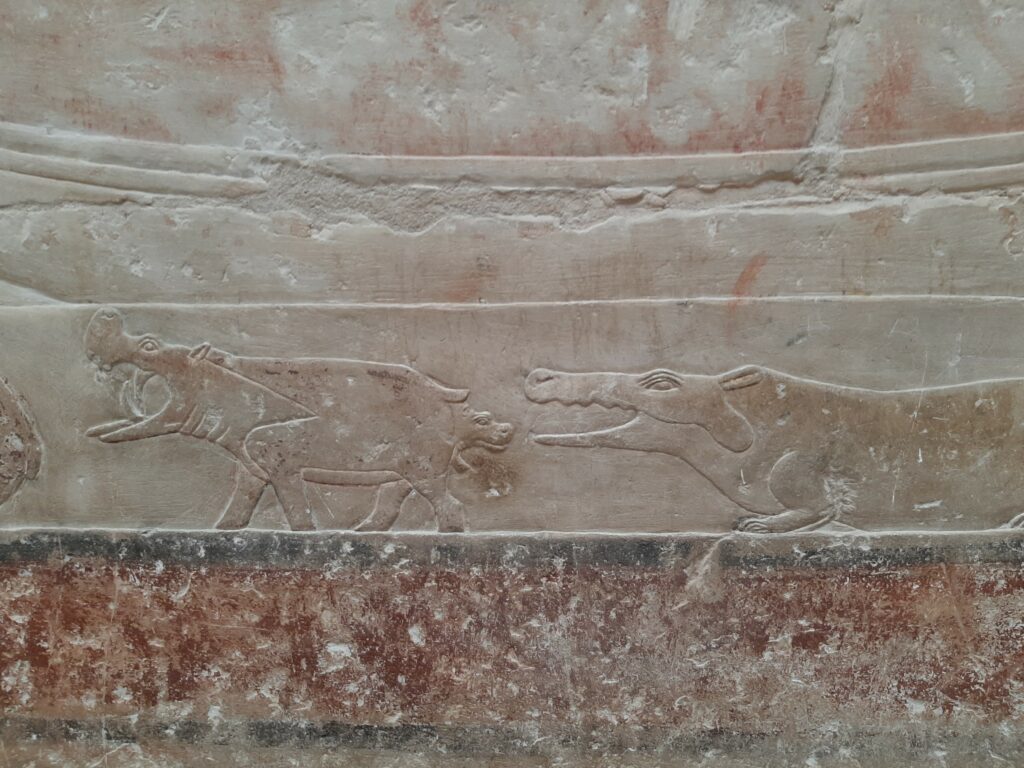
That scene in the tomb of Idut

I like big fish and I cannot lie
Next we took the sleeper train to Aswan in the south of Egypt to begin our northward journey. This was an experience in its own right. Although I appreciate the romance of train travel, I can never sleep on the short berths that haven’t been updated since the 1950s, being catapulted out of bed whenever we passed an oncoming train, and having to creep through the hallway a million times towards the not so pleasant toilet like a sneaky character from Murder on the Orient Express.
Anyway, we arrived in Aswan more or less in one piece and made our way to Elephantine, gorgeous island in the Nile with sandy pathways, mudbrick houses and palmshaded plots of land that transport you back in time to before you were born. I absolutely love this place. On the southern end of the island, the archaeological remains of Abu can be found, with its nilometers, temples and houses from the earliest to the latest periods of Egypt’s ancient history. Across the Nile, the Cataract Hotel evoked Agatha Christie vibes. There is nothing like the beauty of the First Cataract, where the godsent Nile waters first rose and its levels were closely monitored by robe-clad priests. There was also a little museum on the site with fine objects. A laid-back dinner at the Bob Marley restaurant overlooking the East Bank filled the remains of the day.
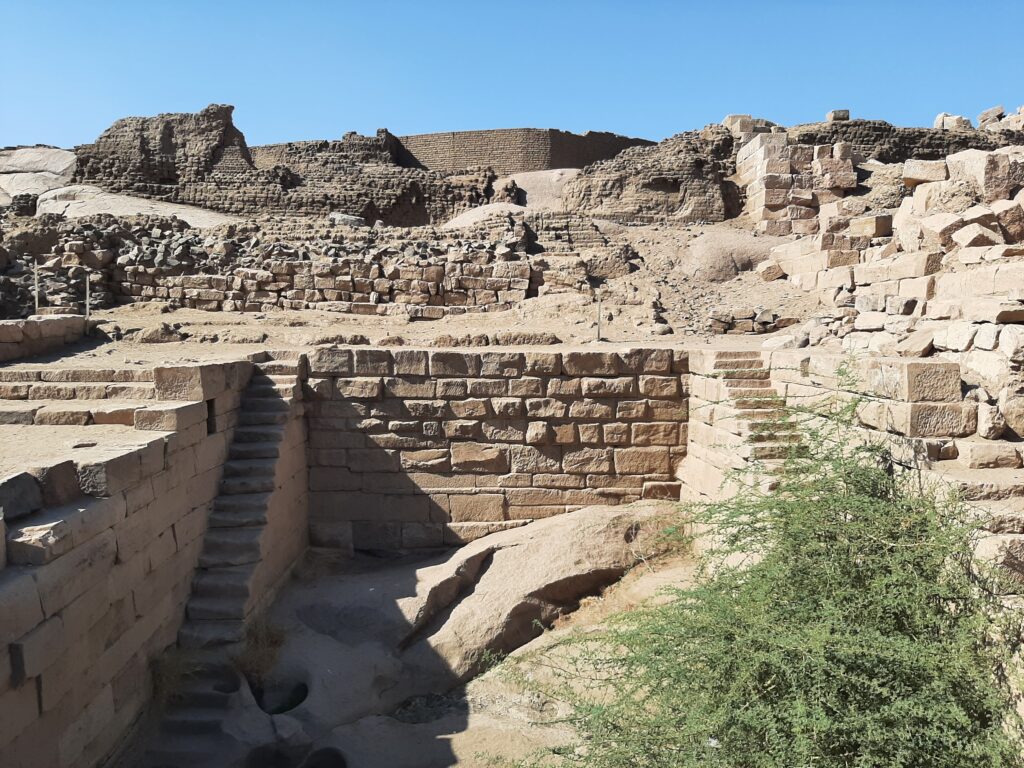
One of the nilometers
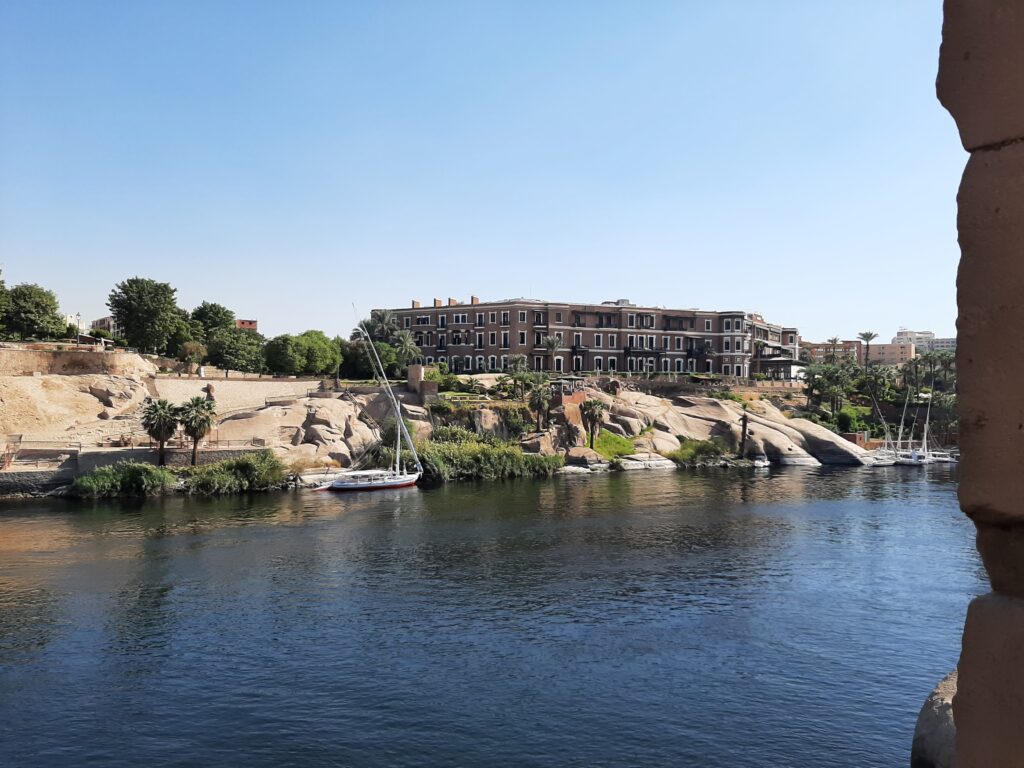
Death on the Nile
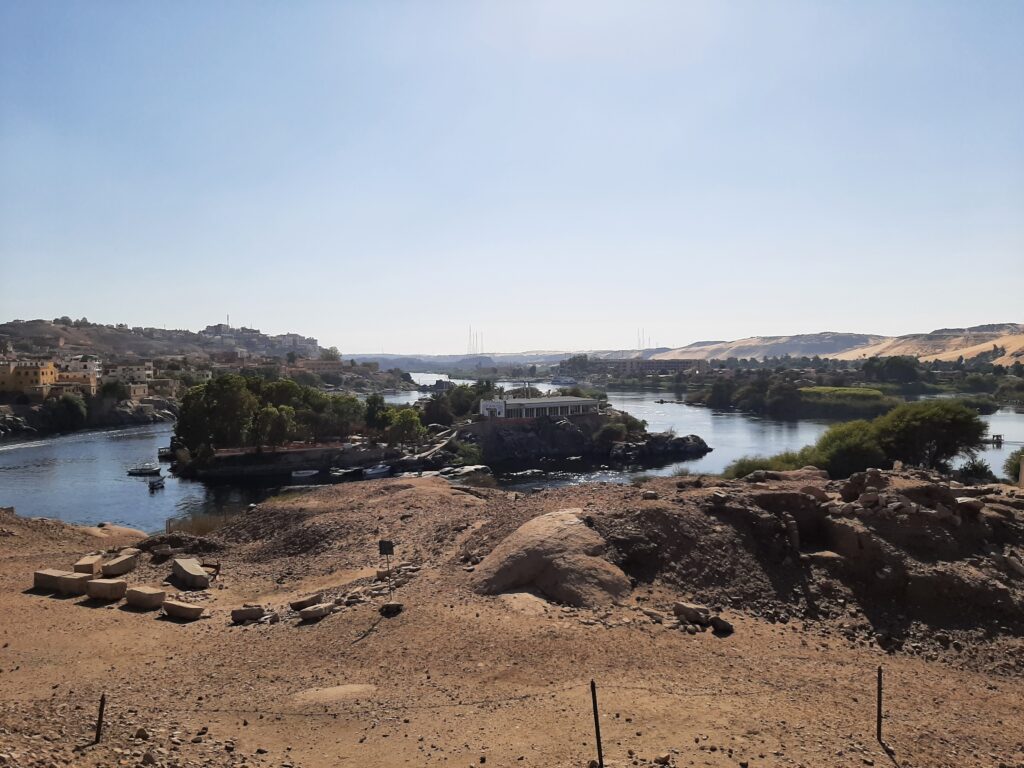
The first cataract
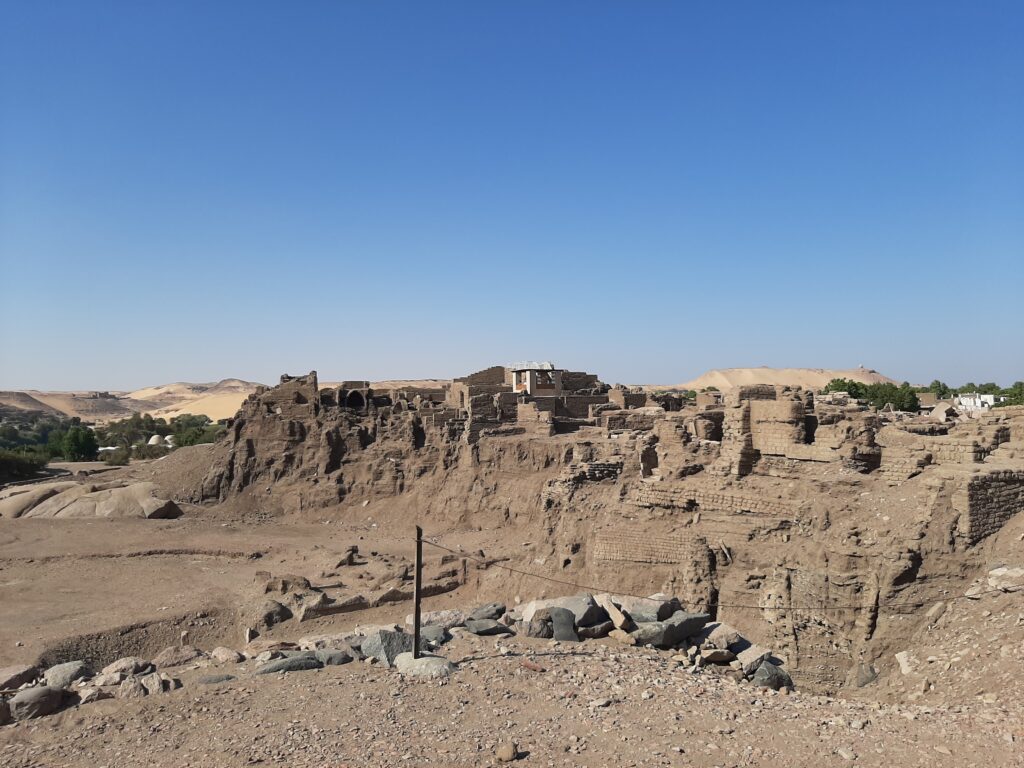
3000 years of history in a single archaeological profile
The next day, after a delicious breakfast in the garden of the Mango Guest House, we took a boat like any ancient Egyptian would have done (just without a motor) to the West Bank and the ancestral tombs of Qubbet el-Hawa. After trudging up the causeway, we had a close look at the tombs of Harkhuf, Khunes, Mekhu/Sabni, and Sarenput I and II. Besides the tombs that are highly interesting, the elevated ridge provides a majestic view of the Nile. It is an excellent example of how the tombs were embedded in the landscape, overlooking the land of the living (which would have been Elephantine island for most of Egyptian history), each with their own causeway to provide access for priests and family members during the burial and on feast days.
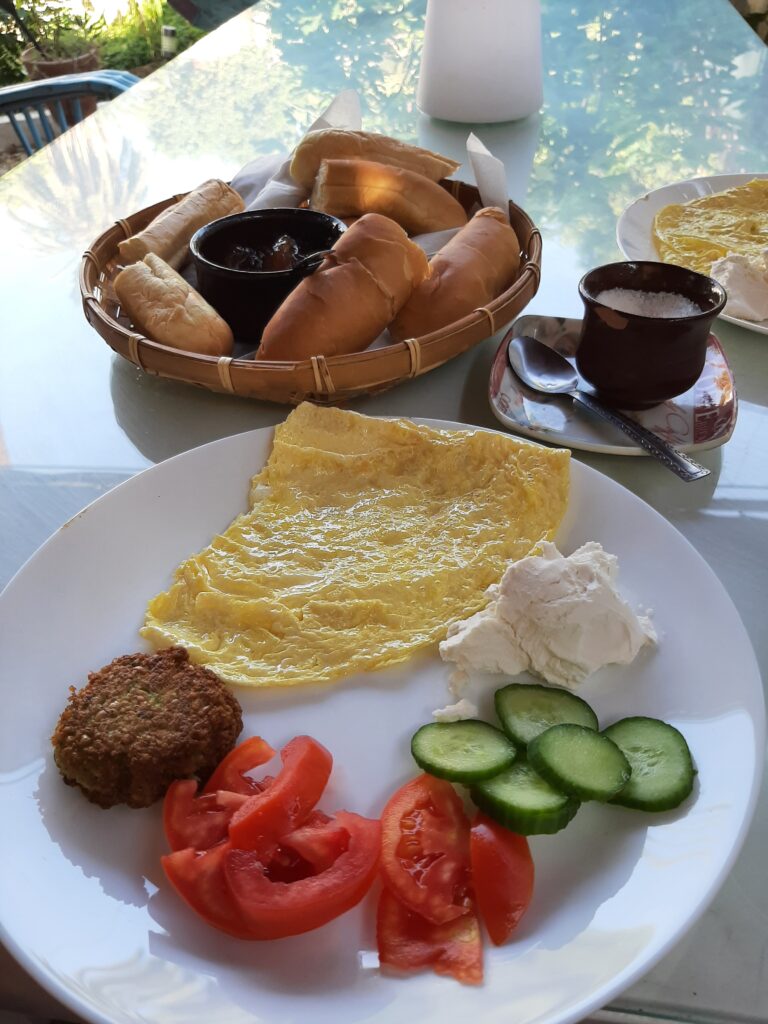
Garden breakfast

Stairway to heaven
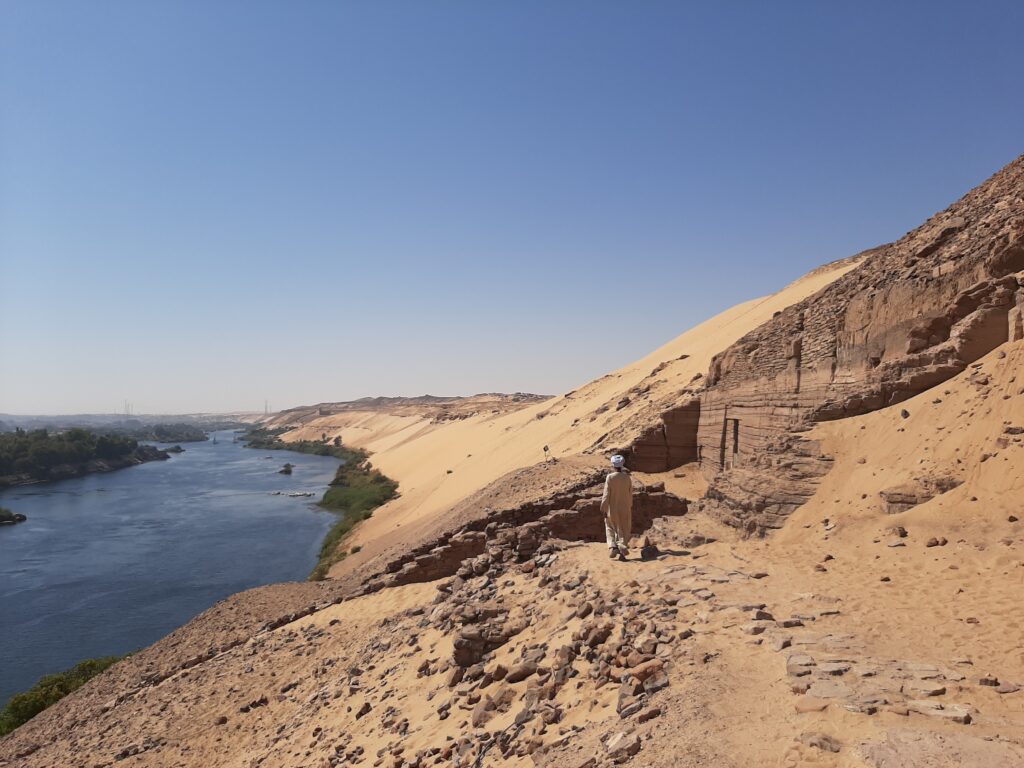
A tomb with a view
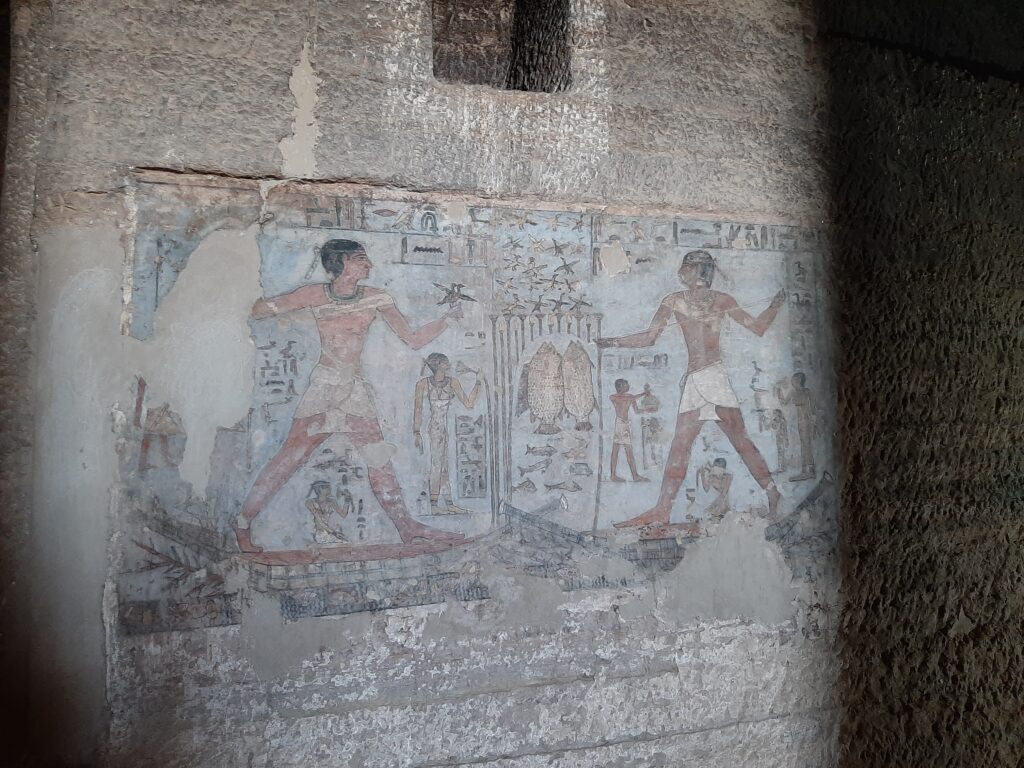
Sabni fowling in the marshes (which marshes?)
When I was in Aswan in 2019, I met a Canadian lady who visited the site of Qubbet el-Hawa but didn’t want to enter the tombs out of respect for the dead. I explained to her that, from an Egyptological perspective, the ancient Egyptian elite would probably have loved for us to read their names and titles and admire their artwork, and encouraged here to visit the tombs of the nobles and Deir el-Medina in Luxor where she went next. This made me rethink if and how the ancient Egyptians meant for their tombs to be visited and enjoyed (which happened even in ancient times as attested by visitors’ graffiti), if done with the proper respect (as the cautious reminders or ‘curse inscriptions’ on the tomb entrances sometimes show).
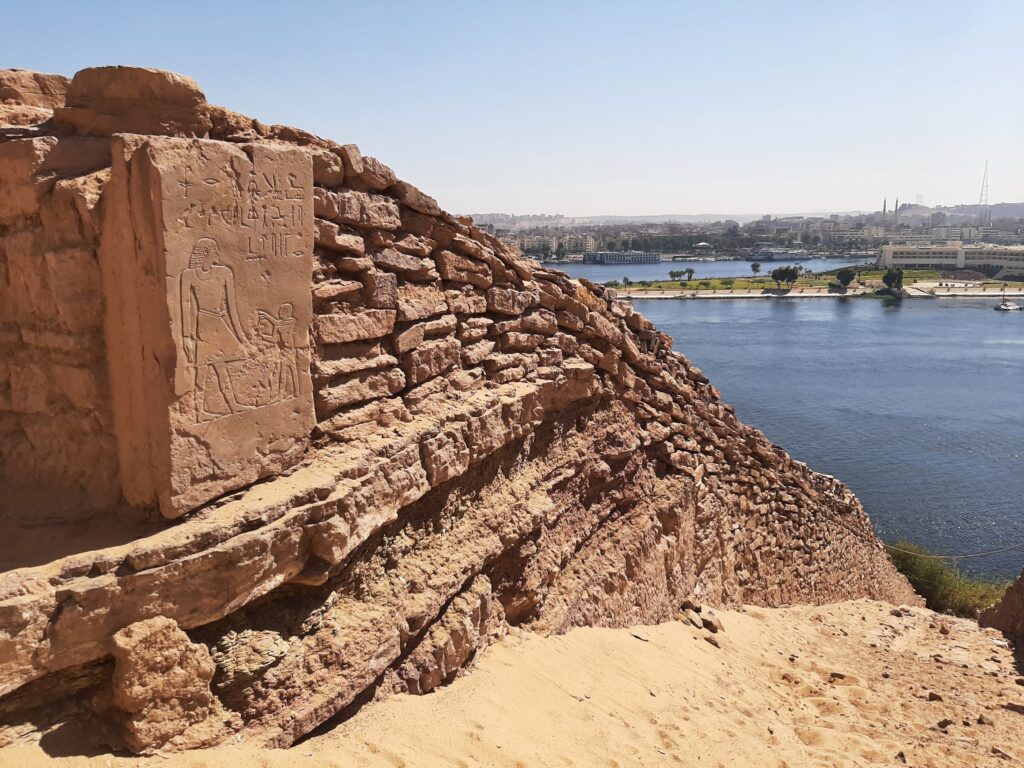
What you’re meant to do after climbing the causeway: offer some incense to the tomb owner
A stunning boat ride away lies the island of Sehel, where a mountain of granite boulders in the smoldering heat is filled with rock inscriptions by soldiers and travelers. Most famouse is the so called Famine Stela dating to the Ptolemaic Period, describing a story in which king Djoser (living 2500 years earlier) asks his wise courtier Imhotep to figure out why the Nile is not flooding. Imhotep urges Djoser to make offerings to Khnum, the god of Elephantine, and promptly the Nile flood returns, averting famine. In thanks, Djoser then builds a temple dedicated to Khnum on Elephantine island. This story goes to show that the importance of the annual Nile flood was deeply ingrained in the Egyptian culture, and the devastation it could bring when the river flowed too weakly (not enough crops) or strongly (destroying fields and habitation) was well known. The Famine Stela was smaller than I anticipated, but the splendor of the rugged landscape is worth every step of the climb.
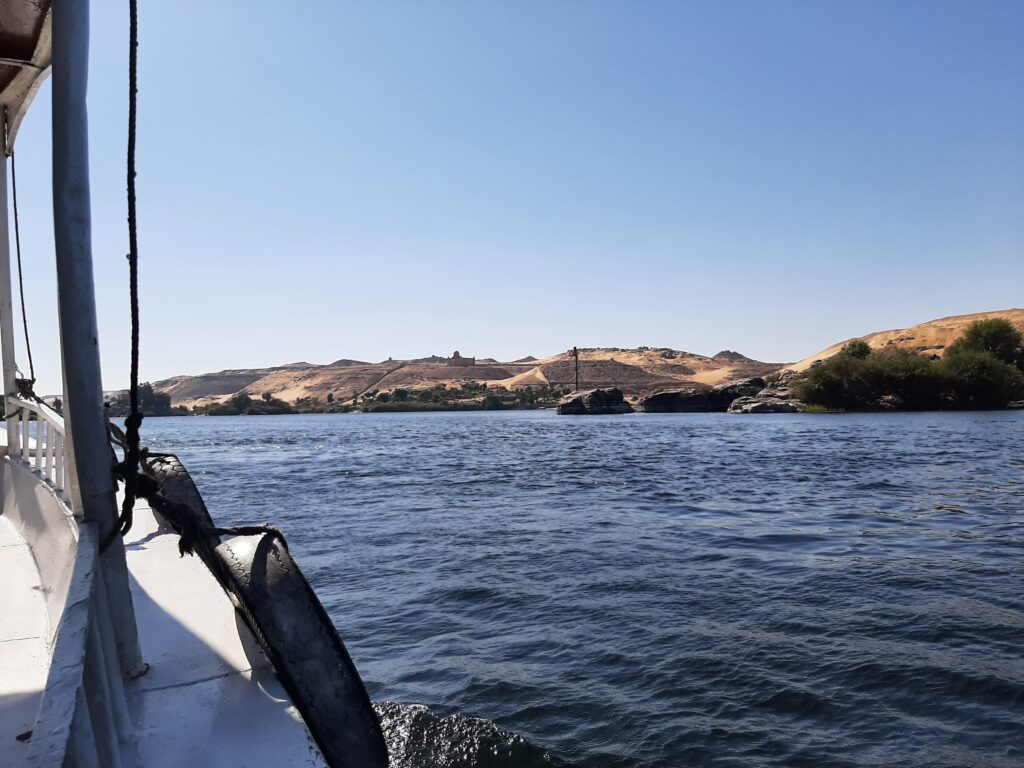
A boat with a view (I will never stop)
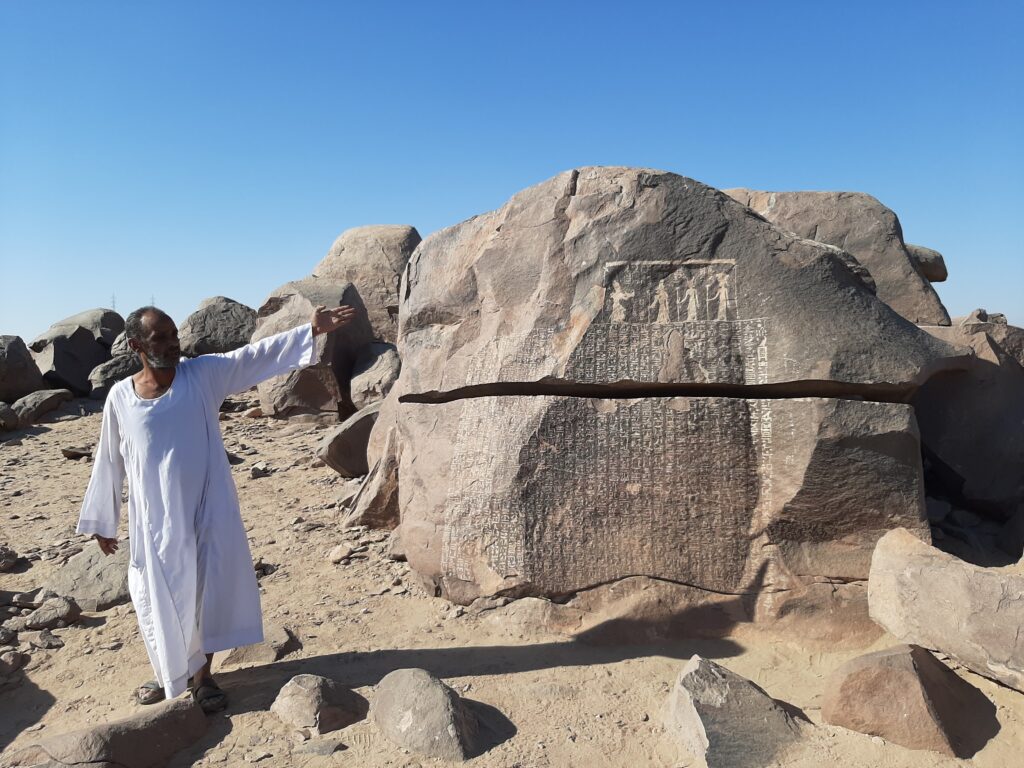
The Famine Stela with friendly man for reference
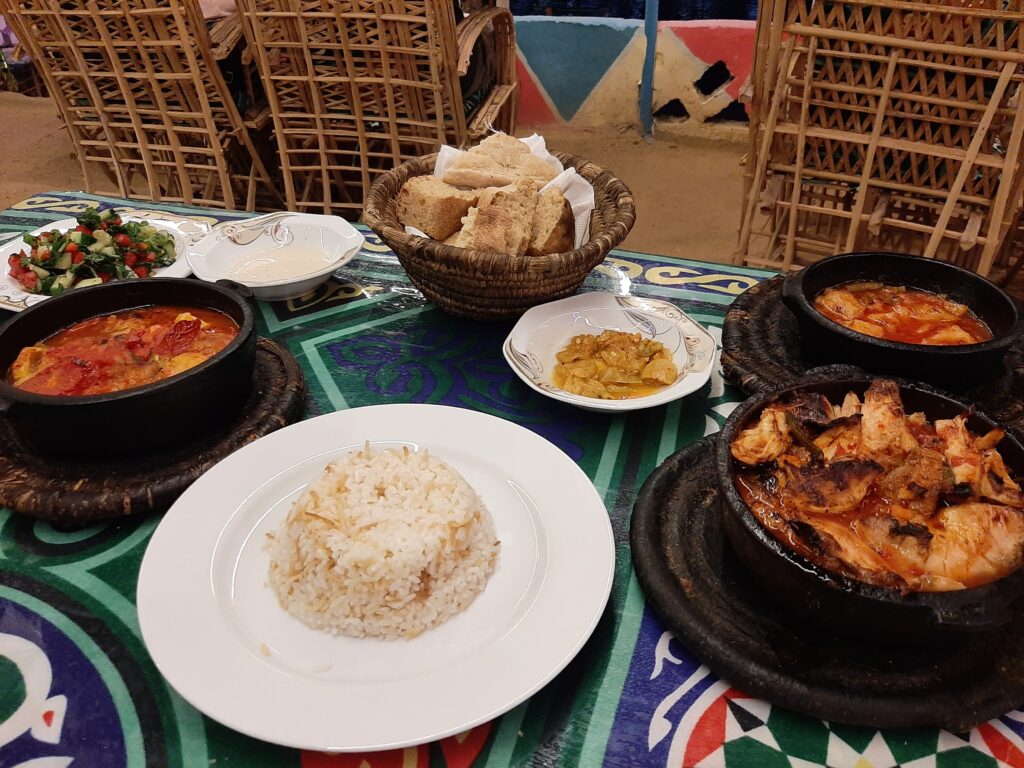
FOOD
The next day brought us to Philae Island, after haggling extensively with various taxi drivers and boatmen. After construction of the Aswan dams, the Ptolemaic temple dedicated to Isis that originally stood on Agilkia Island was submerged by the waters of the Nile. In an international effort the edifice was moved block by block to the higher situated island of Philae. It is a gorgeous spot to spend a happy morning, with a fresh breeze and plenty of crazy-acting tourists to enjoy yourself with. Afterwards we were dropped off at the Nubian Museum, which had an interesting exhibition about the excavations at Qubbet el-Hawa by the University of Jaen, and extensively shows the history of the region from prehistory to the building of the Aswan dams and displacement of the Nubian people. It also has a gorgeous botanical garden that is mostly devoid of people.
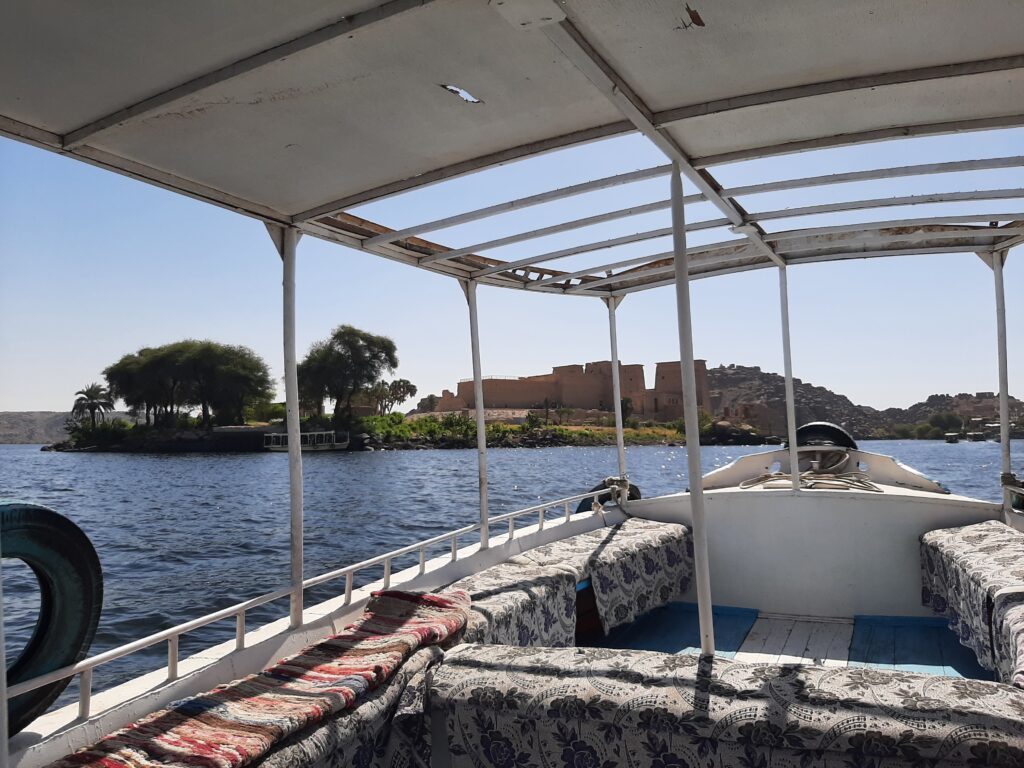
Approaching Elephantine by boat
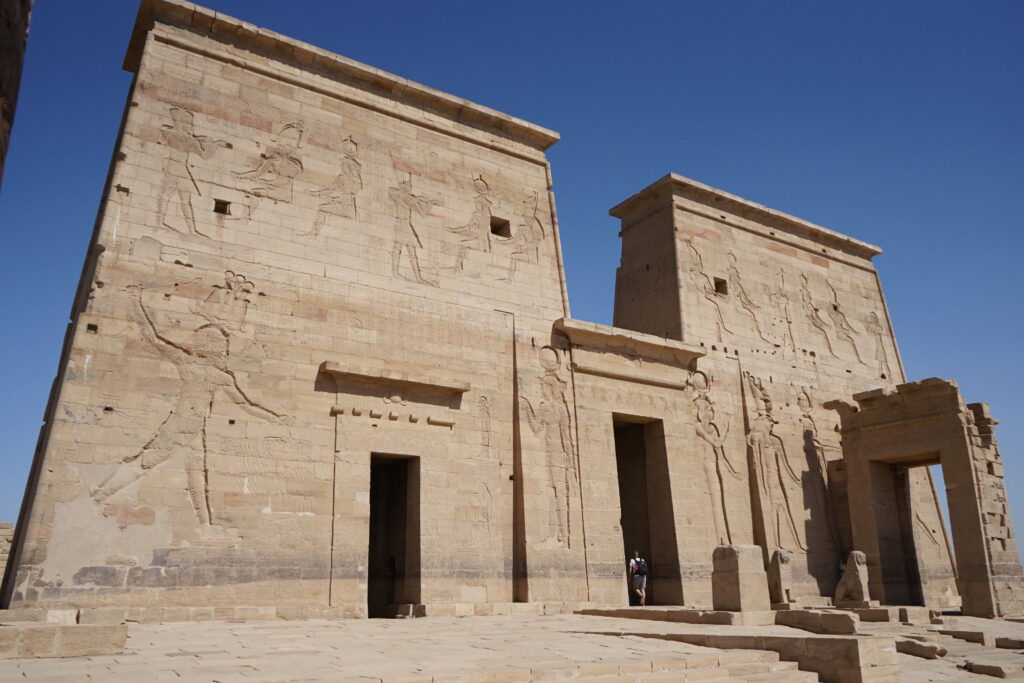
Ptolemaic guy smiting some foes
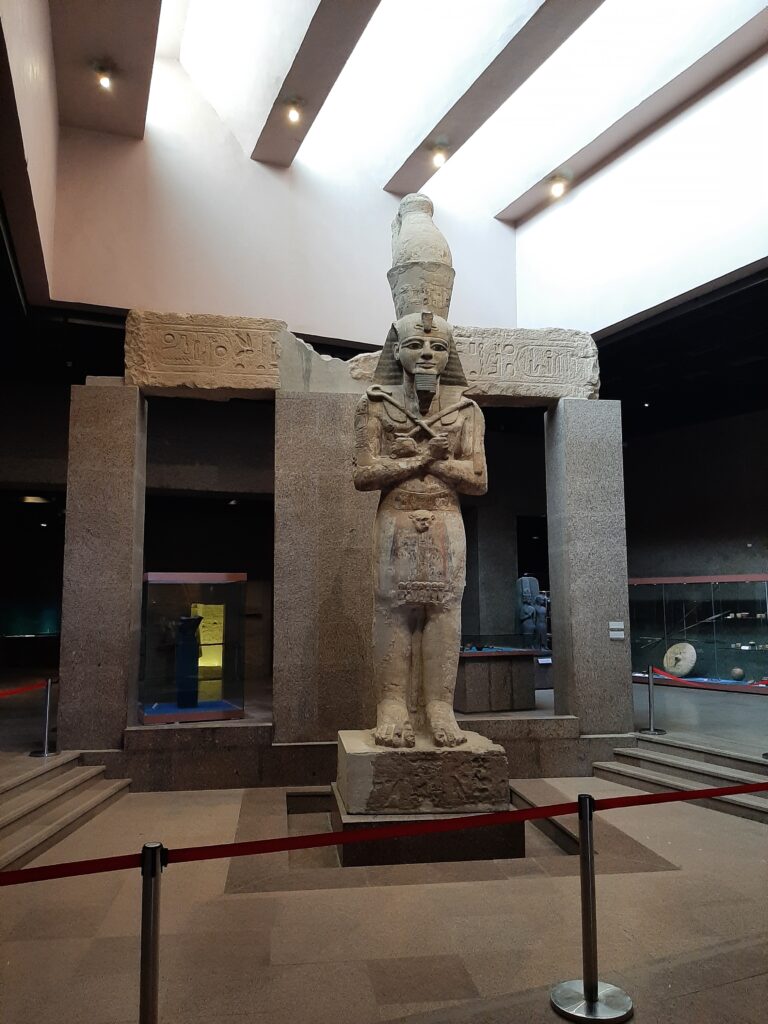
At the Nubian Museum
Next up…
Our expedition continues northward past the sandstone quarries of Gebel el-Silsila and the temple of Horus at Edfu. We will explore the lesser known surroundings of Luxor with a crazy taxi driver, and travel onwards to Abydos and Middle Egypt with our private security detail. Stay tuned for more!
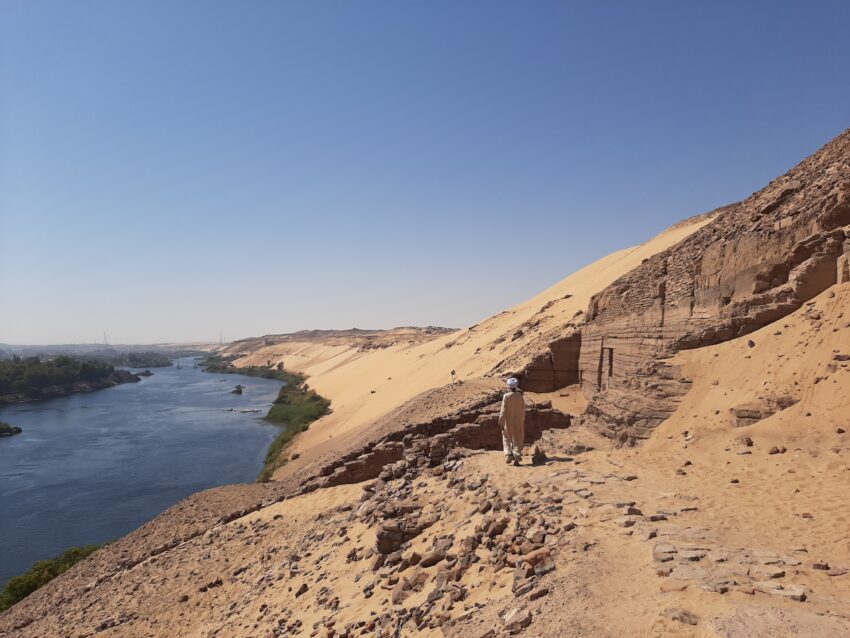
Leuk!
Heeerlijk om te lezen! (Groot deel van mijn Cairo-semester!)
Leuke verhalen. Oude herinneringen…